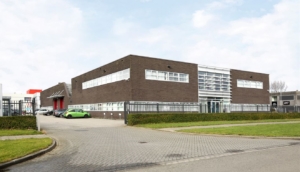UV-Box 636
Weathering Testing Apparatus
UV radiation is responsible for almost all the processes of photo degradation of durable materials exposed to the external environment. The fluorescent lamps used in the UV-BOX 636 simulate critical UV short waves and realistically reproduce the damage caused by sunlight. The types of damage that can be simulated with the UV-BOX are the following: color change, loss of gloss, chalking, cracking, cracks, blistering, veiling, brittleness, loss of strength and oxidation. Dew is mainly responsible for most of the moisture that occurs during outdoor exposure, much more than rain. The condensation system of the UV-BOX 636 realistically simulates dew and amplifies its effect through the use of high temperatures.
The condensation process automatically purifies the network water used in the system. This is because the process of evaporation and condensation of water on samples is actually a distillation process, which allows to remove all impurities.
UV-BOX can accommodate up to 48 standard samples (75 mm x 150 mm)¸it is possible to create special sample holders according to customer specifications. The operation is done via a modern touch screen panel.
The UV lamps are not included in the delivery.
Purpose and application: The accelerated UV aging test reproduces the damage caused by sunlight, rain and dew. In a few days or weeks of exposure of the samples inside the UV-BOX 636, damages occurring in months or years of outdoor exposure can be reproduced.
Test principle: To simulate aging due to external atmospheric agents, UV-BOX subjects the materials to alternating cycles of UV radiation and humidity at controlled high temperatures. The instrument simulates the effects of sunlight through the use of special UV fluorescent lamps and the simulation of the effect of dew and rain occurs through condensation or a spray of water (Spray option).
Norms
- ASTM D4329
- ASTM D4587
- ASTM D4799
- ASTM D5208
- ASTM D6662
- ASTM G53
- ASTM G154
- ASTM G151
- ISO 4892-3
- ISO 11507
- ISO 11895
- ISO 11997-2
- ISO 16474-3
- EN 927-6
- EN 1297
- EN 12224
- EN 13523-10
- EN 1898
- pr 1062-4 SAE J 2020 – AATCC TM 186



